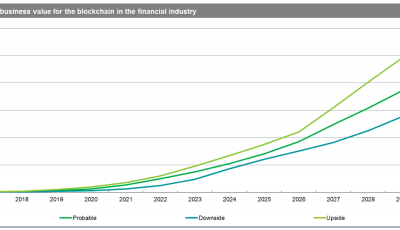Revolution Interrupted

Bitcoin logo
Turn back the clocks to 2009. A small portion of the internet was abuzz with a new tool for avoiding the eyes of the government, any government. The long and meaningful legacy of cypherpunks, privacy wonks who have consistently done battle with anyone who wishes to control or censor the internet, has put a significant independence streak in internet users. Rising income inequality, a sense of lost purpose in a generation captured by its own interconnectedness rather than by competition, and the tail end of a massive recession certainly played a role in creating the right conditions for the birth and buzz of bitcoin. Fast forward to today. Where was the promised revolution? What happened to the toppling of governments and a return to privacy? When can we go to the moon?
Revisiting bitcoin’s past produces a trove of cringe-worthy events and characters. Check back to 2013 and you’ll find the all time price high, when bitcoin’s value was riding the Mt. Gox wave, which ended up being a tsunami that almost destroyed the cryptocurrency. The famed “willy bot” pumped the price above $1000, creating a sense of euphoria in bitcoin believers that has never really left. Mirroring that event, current wash trading on the opaque Chinese exchanges is having the same effect, massive trading volume that is likely fake is stabilizing the price. Perhaps folks learned not to get greedy, like the owner of “Willy,” but to fake it in moderation. It certainly seems to be working for the time being.
When Mt. Gox came crashing down, the tumble captured colorful character Roger Ver who created one of the most embarrassing episodes in bitcoin lore, the infamous “Roger Ver-ified” video. In fact, 2013 may have been the highest point for bitcoin as a movement and as a currency. A Forbes contributor even called 2013 the “Year of The Bitcoin”. The year ahead, 2014, saw a downward spiral thanks to legal uncertainty and multiple scams/exploits that resulted in users losing funds. The year 2015 saw a surge, bitcoin regained a significant amount of value, and this trend has continued into 2016. The difference now is the emphasis on blockchain technology that is separate from bitcoin. Banks, governments, start-ups, and competing cryptocurrencies have all decoupled by the bitcoin train in search of a more reliable, and less combative form of cryptocurrency.
 The movement around bitcoin has found itself increasingly at odds during inward discussions. The size of blocks, meant to facilitate more transactions, has created a lasting schism. Notable developers have left the project, and others have risen to the fore with dubious merits. The unique “Luke-jr” can only be described as slightly nuts, and his influence on the project has certainly caused disruption rather than progress. The outright contempt for “altcoins,” meaning any “coin” that isn’t bitcoin, and angry barrages between the respective communities has poisoned development, creating parallel work rather than joint efforts to solve shared problems. Common discussion forums are tainted by strong censorship, an incredible hypocrisy when one considers the audience of bitcoin. Strongman Theymos has convinced his flock to not only let him launder over $1,000,000 on still incomplete “forum software,” but to allow censorship of competing ideas on bitcointalk.org and /r/bitcoin. In 2016 the flow of scams hasn’t stopped, and this extends to altcoins and other crypto-related projects.
The movement around bitcoin has found itself increasingly at odds during inward discussions. The size of blocks, meant to facilitate more transactions, has created a lasting schism. Notable developers have left the project, and others have risen to the fore with dubious merits. The unique “Luke-jr” can only be described as slightly nuts, and his influence on the project has certainly caused disruption rather than progress. The outright contempt for “altcoins,” meaning any “coin” that isn’t bitcoin, and angry barrages between the respective communities has poisoned development, creating parallel work rather than joint efforts to solve shared problems. Common discussion forums are tainted by strong censorship, an incredible hypocrisy when one considers the audience of bitcoin. Strongman Theymos has convinced his flock to not only let him launder over $1,000,000 on still incomplete “forum software,” but to allow censorship of competing ideas on bitcointalk.org and /r/bitcoin. In 2016 the flow of scams hasn’t stopped, and this extends to altcoins and other crypto-related projects.
Where did mass adoption go? Well, it didn’t go at all. Bitcoin is in no way ready for mass adoption. Users face the choice of slow or unpredictable transaction times or paying higher and higher fees to guarantee a transaction is included soon. Consumer-facing products are often low quality, buddy, and act as middlemen to other middlemen; essentially fee-based gateways. The reputation of bitcoin remains muddy, with the average person being linked with drugs and criminal activity. The organizations that once pledged to push bitcoin to the mainstream have been less than productive, a victim of infighting and overpaying themselves. Apparently no one in bitcoin can escape the desire to enrich themselves before helping anyone else, a telling characteristic of the culture. A fake Satoshi who made a mess of himself and the community in public, and the unresolved problem of Satoshi’s massive coin hoard continue to hover over events. No one seems to want to confront the mining centralization issue, which means a very small group of miners effectively control the future of the cryptocurrency. Any effort from the Chinese government to regulate exchanges could also crash the price, since opening order books for audits would certainly reveal massive wash trading. A laundry list of ills that loom on the horizon causes a certain amount of pessimism.
So it would appear the bitcoin revolution has been interrupted. Put the party on pause, cancel the cake and ice cream. A toxic culture, a slow product, buggy design, and constant scams have reduced the buzz around bitcoin to a dull annoyance. It would help if bitcoin developers could make forward progress, but the censorship of ideas and disparity in rational needs versus irrational political ideology means arguments devolve into questions of idealism rather than consumer-focused development. I guess the bitcoin revolution will continue to putter along, waiting for some change to the status quo. Whether by government regulation, price fluctuation, or developer consensus, something has to give.
Image credits:
Bitcoin logo – Sirius (CC BY 3.0)
Altcoin + bitcoin logos – Rommyn (CC BY-SA 4.0)

![[Guest Post] Breaking Down Barriers with The Next Generation of DApps](https://coinreport.net/wp-content/uploads/2019/06/Jimmy-Zhong-CEO-of-IOST-400x230.jpg)











The Blockchain will be the true change but don’t count Bitcoin out. It has a great deal of very smart, talented and honest wealthy individuals behind it. If the powers that be haven’t stomped it out yet, we may have turned the corner and the punks of the 80’s are now ruling the world. So when you hear a Buzzcocks song playing in a VW commercial, Bitcoin is here to stay. DIY made many 19-year hardcore punks millionaires and the great thing is at 50 they are just as cool as at `19!